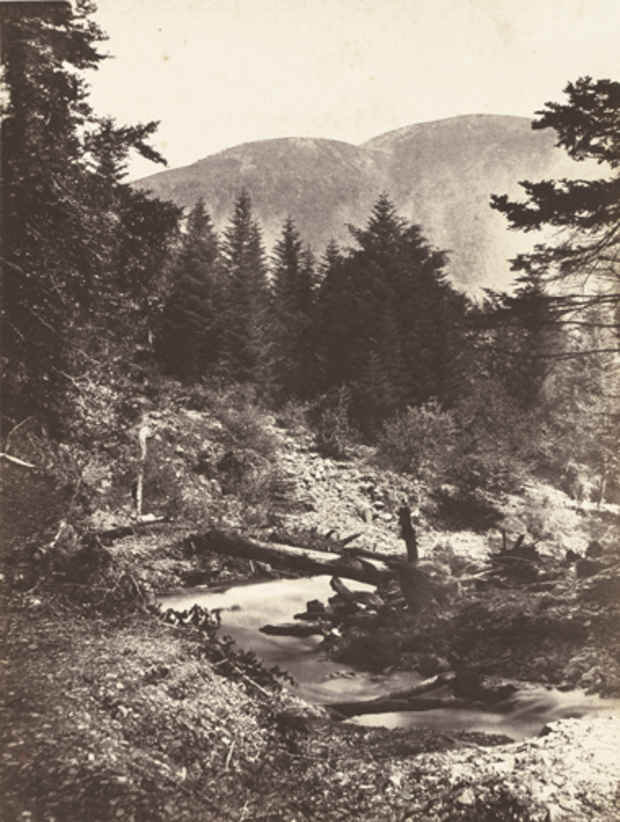“Landscapes from the Collection of Jay McDonald” Exhibition
Hans P. Kraus, Jr. Fine Photographs

This event has ended.
Nineteenth-century photographs from the collection of Jay McDonald will be on view at Hans P. Kraus Jr. Fine Photographs, the second part of a two-part exhibition, from September 16 through November 20, 2015. The show presents landscape photographs by some of the early masters, including Édouard Baldus, Adalbert Cuvelier, Roger Fenton, Charles Nègre, and Joseph, vicomte Vigier. The first part of the exhibition, on view through July 31, features early architectural views from the McDonald collection.
Jay McDonald, based in Santa Monica, California, began collecting photographs in the 1970s and has built one of the most impressive private collections of 19th-century photographs in the U.S. He was particularly drawn to paper negatives and salt prints made in the 1850s in France and England. At the time, photography was still a very young art, becoming popular but not yet a part of everyday life. Works in his collection reflect the aesthetic and technical experimentation that animated the medium and became the foundation for subsequent generations of photographers. In July of this year, The J. Paul Getty Museum announced the acquisition of 39 photographs from the collection of Jay McDonald.
Among the French photographers represented in the McDonald collection, Édouard Baldus (1813-1889) was known by 1855 as the leading architectural photographer in France. His compositions were so impressive for their clarity and scale that the government hired him to document historical monuments in Paris and the provinces. To celebrate the glory of Napoleon III and the Second Empire, he was commissioned to photograph the New Louvre under construction. The beautiful landscape Château de Polignac (1850s) belongs to a series of photographs that Baldus made while traveling through Auvergne, in central France. Perhaps because of the dramatic physical character of that region, Baldus — through a poetic filter that can seem unrelated to his architectural views — focused on the land itself.
Photographs by Adalbert Cuvelier (1817-1871), lesser known than his son Eugène, are very rare. Only a few dozens survive, primarily at the Bibliothèque nationale in Paris. Gorges de Franchard (1854) is an intimate close-up view of the Forest of Fontainebleau, a favorite destination for painters and photographers of the time. Instead of recording its places of interest, Cuvelier captured the experience of the forest’s intricate, vital nature.
Joseph, vicomte Vigier (1821-1894) took a series of photographs of the Pyrenees in the summer of 1853. Bagnères de Luchon, a magnificent salt print, evokes the sublime by portraying the uncontrollable and grandiose power of nature. Vigier was one of Gustave Le Gray’s most successful pupils. His ambitious views of the Pyrenees earned unanimous praise by his contemporaries as proof of the universal and timeless language of photography.
Roger Fenton (18019-1869), the most influential British photographer of his day, is represented in the show by the lyrical Landscape with waterfall (1850s). In 1854, he was appointed the first official photographer of the British Museum and received a commission from Queen Victoria to make portraits of the Royal Family. His most widespread acclaim, however, came the following year with photographs of the Crimean War.
Media
Schedule
from September 16, 2015 to November 20, 2015
Artist(s)
Édouard Baldus, Adalbert Cuvelier, Roger Fenton, Charles Nègre, et al.